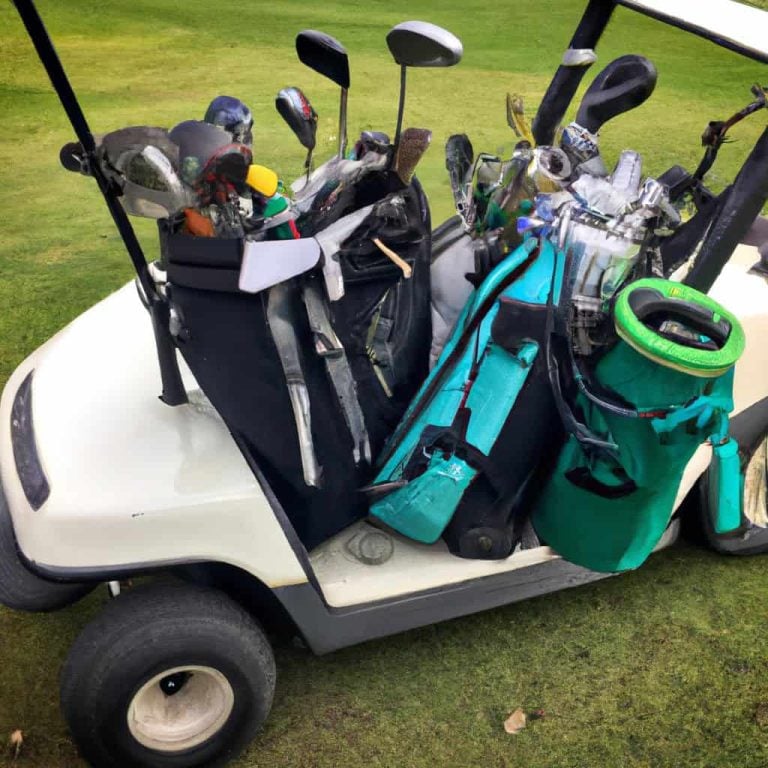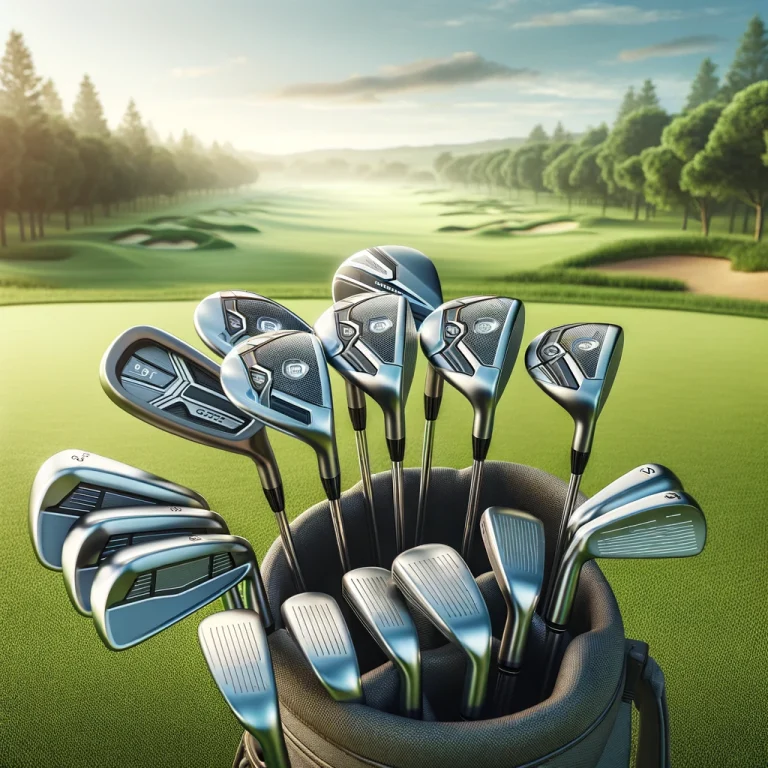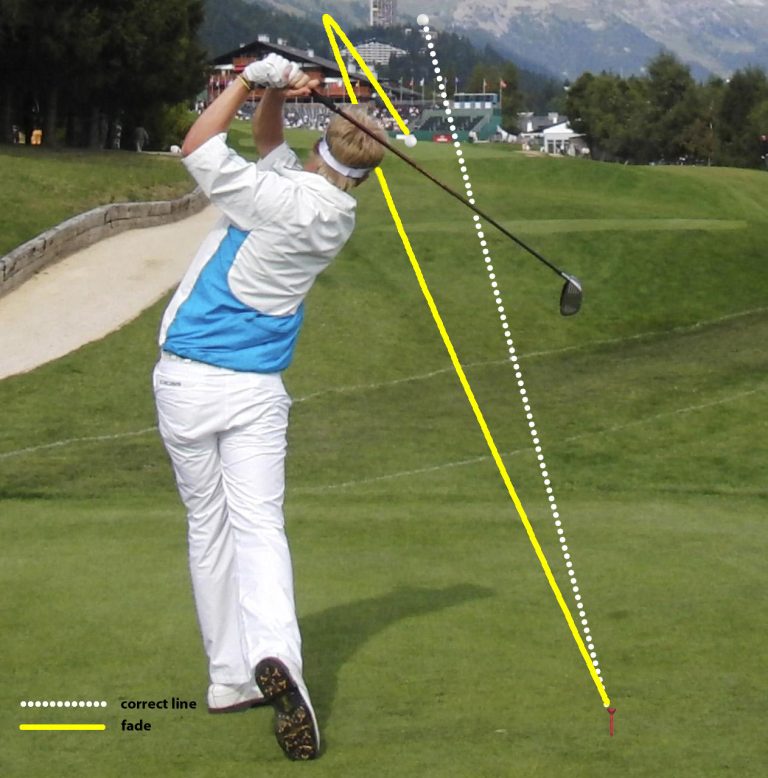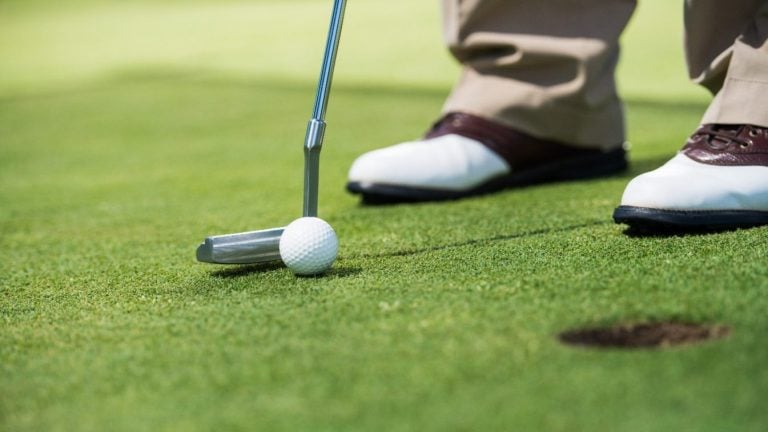Golf Club Buying Guide: How Much to Spend for the Perfect Set [2024]
Hey there, budding golfer! Are you scratching your head, trying to figure out how much you should be spending on your very first set of golf clubs? You’ve hit the right spot! In our crisp, easy-to-digest buyer’s guide, we’re going to unfold everything you need to know about golf club costs and what really goes into those price tags. Here’s a quick preview of what you’ll gain from this guide:
- Cost Breakdown: Understand what you’re paying for and why some sets are pricier than others.
- Pricing Factors: Get the lowdown on what influences golf club prices and how to spot value.
- Value vs. Investment: Explore the benefits of buying a complete set versus picking up pre-owned treasures.
- Performance Insights: See how the right clubs can elevate your game, especially when you’re just starting out.
- Smart Shopping Tips: Arm yourself with knowledge on new vs. used, how seasons can affect prices, and the ideal number of clubs for your level.
We’re here to guide you through the maze of options, ensuring you emerge with the perfect set of clubs without feeling overwhelmed. Whether it’s finding the sweet spot in pricing or understanding the nuances of golf club technology, we’ve got the insights you need. Ready to embark on your golf club buying journey? Let’s dive in!
Key Takeaways:
- Don’t overspend on golf clubs as a beginner – explore options such as complete sets or used clubs to get the best value for your money.
- Consider your handicap and skill level when determining the number of clubs and how much to spend on them.
- Understand the seasonal impact on golf club prices and consider timing your purchases accordingly for the best deals.
Introduction: How Much to Spend on Golf Clubs
In terms of investing in golf clubs, understanding how much to spend is crucial for both beginners and seasoned golfers.
.jpg)
One of the key factors to consider is pricing. Golf clubs can vary significantly in cost, with prices ranging from budget-friendly options to high-end sets. Finding the right balance between quality and affordability is essential for any golfer.
Brand names also play a significant role in the pricing of golf clubs. Recognized brands often come with a higher price tag, but they may offer better performance and durability. Lesser-known brands can still provide excellent quality at a more reasonable cost.
Another aspect to evaluate is the materials used in the construction of the clubs. Different materials impact the feel, performance, and longevity of the clubs. Understanding the benefits of materials such as titanium, carbon fiber, and steel can help golfers make informed decisions when selecting their ideal set of clubs.
Understanding Golf Club Components
When selecting golf clubs, understanding the components that make up a club can greatly influence your choice. Each component plays a crucial role in the performance of the club and can affect your game.
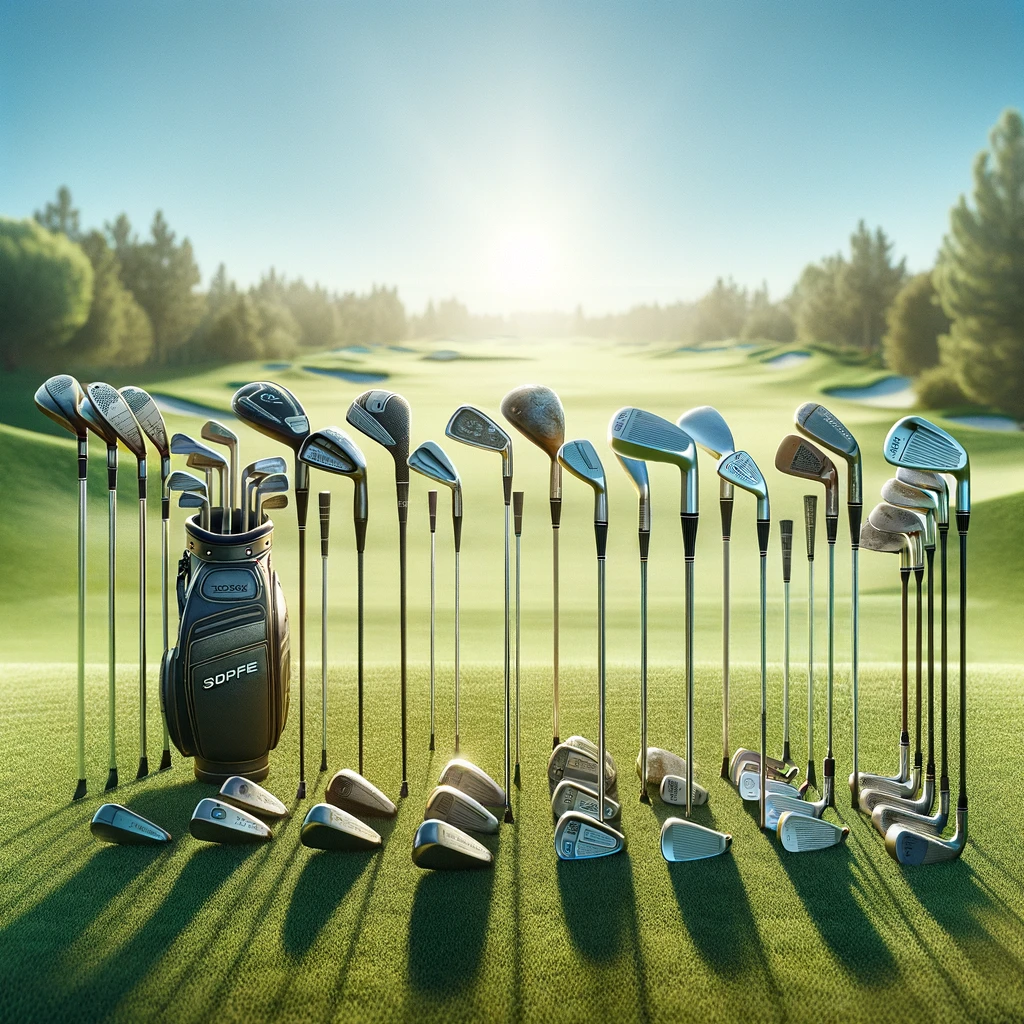
Club Head
The club head is the part of the golf club that strikes the ball. Its design, material, and size can vary significantly depending on the type of club. For example:
- Drivers are designed with large heads to maximize distance and have a lower loft to help launch the ball off the tee.
- Irons and Wedges have smaller heads and higher lofts for precision, control, and varying degrees of spin.
- Putters have the most specialized heads, designed for rolling the ball on the green with precision.
Materials such as titanium, steel, or a combination are commonly used, each offering different benefits in terms of weight and durability.
Shafts
The shaft is the long tube that connects the club head to the grip. It can significantly influence the swing, speed, and accuracy of the shot. Shafts are primarily made from:
- Steel, which offers durability and a more controlled swing.
- Graphite, lighter than steel, which can help increase swing speed and is often preferred by players with slower swing speeds.
The shaft flex (the amount of bend in the shaft during the swing) is also critical, with options ranging from extra stiff to ladies, affecting the trajectory and distance of the ball.
Grips
The grip is where you hold the club, and its material, size, and texture can affect your comfort and control. Grips need to be replaced periodically to ensure optimal performance. Factors to consider include:
- Material: Rubber, corded, or a combination, offering different levels of feel and moisture management.
- Size: Ensuring the grip fits your hand is vital for comfort and control. Incorrect grip size can lead to poor shot accuracy and hand strain.
Club Length and Lie
- Club Length: The length of the club affects your stance and swing. Taller players may require longer clubs, while shorter players may benefit from shorter clubs.
- Lie Angle: This is the angle between the shaft and the ground when the club is in a proper position at address. An incorrect lie angle can lead to off-center hits and inaccurate shots.
Categories of Golf Clubs
Understanding the different categories of golf clubs is essential for assembling a set that matches your skill level and style of play.
Drivers
Drivers are designed for maximum distance off the tee. They have the largest heads and lowest loft angles of any club type. When choosing a driver, consider the loft, shaft stiffness, and head size for the best combination of distance and accuracy.
Irons
Irons range from 1 (lowest loft) to 9 (highest loft), with higher-lofted irons used for shorter shots. Cavity back irons offer more forgiveness on off-center hits, making them suitable for beginners and intermediate players. Blade irons, preferred by more experienced players, offer greater control and feel.
Wedges
Wedges are specialized irons with higher lofts used for short-distance shots, typically within 120 yards of the green, and include pitching, sand, lob, and gap wedges. Each type has a specific use, such as getting out of bunkers or making high, soft shots onto the green.
Putters
Putters come in various shapes and sizes, including blade, mallet, and peripheral weighted designs. The choice of putter is highly personal and can depend on your stroke style and comfort.
Hybrid Clubs and Fairway Woods
- Hybrid Clubs: Combine the characteristics of irons and woods, offering easier-to-hit alternatives to long irons. They’re useful for a variety of shots, making them versatile additions to any golf bag.
- Fairway Woods: Have larger heads than irons but smaller than drivers. They are used for long-distance shots from the fairway and sometimes off the tee as an alternative to drivers.
Selecting the right mix of these clubs will depend on your playing style, the courses you play, and your physical characteristics. A well-rounded set will enable you to handle a wide range of shots and situations on the course.
Price Ranges Explained
Navigating the wide range of golf club prices can be daunting for both novice and seasoned golfers alike. Understanding what you can expect within different price brackets is crucial for making an informed decision that aligns with your budget and golfing needs.
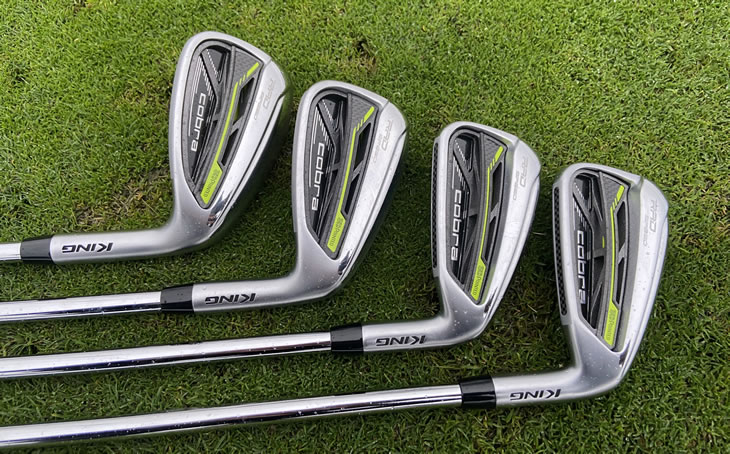
Entry-Level Sets
- Price Range: Approximately $200 – $400
- Features: These sets typically include the basic clubs needed to get started: a driver, a couple of irons, a wedge, and sometimes a putter. The materials and technology are basic but sufficient for beginners.
- Best For: New golfers learning the game or casual players who play infrequently.
Also Read: Best Golf Clubs on Budget for Beginners
Mid-Range Sets
- Price Range: Approximately $400 – $1000
- Features: Mid-range sets often feature better materials like stainless steel and might include advanced technology in club design for improved performance. These sets usually offer a full range of clubs, including multiple irons, wedges, and hybrids.
- Best For: Intermediate golfers looking to improve their game or casual players seeking better performance without a premium price tag.
High-End/Professional Sets
- Price Range: $1000 and up
- Features: High-end sets use premium materials (e.g., carbon fiber, titanium) and incorporate advanced technologies and customization options. They are designed for maximum performance and precision.
- Best For: Serious or competitive golfers who demand the best in terms of performance and customization and are willing to invest in their equipment.
Individual Club Pricing
- Drivers: $200 – $500
- Irons (set): $400 – $1200
- Wedges: $100 – $200 each
- Putters: $100 – $400
- Hybrids/Fairway Woods: $150 – $300 each
- Buying clubs individually allows for customization but can be more expensive than purchasing a set.
Also Read: Best Golf Clubs on a Budget
Factors Affecting Golf Club Prices
Several factors can significantly influence the price of golf clubs, from the materials used in their construction to the brand reputation. Understanding these can help you make more informed decisions when purchasing.
The cost of golf clubs varies significantly based on factors such as quality, brand names, and the materials used in their construction.
In terms of determining the cost of golf clubs, one of the primary factors that greatly influences the price is the quality of the clubs. Higher quality clubs often come with a higher price tag due to the advanced technology, craftsmanship, and performance capabilities they offer. Recognized brand names in the golf industry can also significantly impact the price of golf clubs. Golfers may be willing to pay more for clubs from well-known brands that have a reputation for producing top-tier equipment.
The materials used in the construction of golf clubs play a crucial role in setting their price. Clubs made from premium materials such as titanium, carbon fiber, or high-grade steel are typically more expensive than those made from standard materials. These premium materials not only enhance the performance of the clubs but also contribute to their durability and overall quality.
Also Read: Difference Between Cheap and Expensive Golf Clubs
Material and Construction
- Materials: The choice of materials, such as steel, titanium, or graphite, directly impacts the cost. Titanium and carbon fiber, for example, are lightweight and durable but also more expensive.
- Construction: Clubs that feature intricate designs, such as multi-material heads or advanced vibration-damping systems, also command higher prices.
Brand and Sponsorships
- Brand Reputation: Well-established brands often charge more due to their reputation for quality and performance.
- Sponsorships: High-profile endorsements and sponsorships can also add to the cost, as part of the marketing expenses are passed on to consumers.
Technological Innovations
- Innovations: Clubs featuring the latest technology, whether in aerodynamics, adjustability, or materials, typically cost more. These innovations promise improved performance, such as longer distance or better accuracy.
- Research and Development: The cost of extensive research and development that goes into creating these innovations is factored into the final price of the clubs.
Custom Fitting and Personalization
- Custom Fitting: Opting for custom-fitted clubs can significantly increase the price. Custom fitting ensures clubs are tailored to your specific swing characteristics, but the process requires additional resources from manufacturers.
- Personalization: Features like custom grips, shafts, and engravings add to the cost but can improve comfort and confidence on the course.
Understanding these factors and how they contribute to the overall cost of golf clubs can guide you in choosing the right set within your budget, ensuring you pay for features that will genuinely benefit your game.
How Much Should You Spend?
Deciding how much to invest in a set of golf clubs depends on various factors, including your level of commitment to the game, your playing goals, and, importantly, your budget. Here’s how to approach this decision:
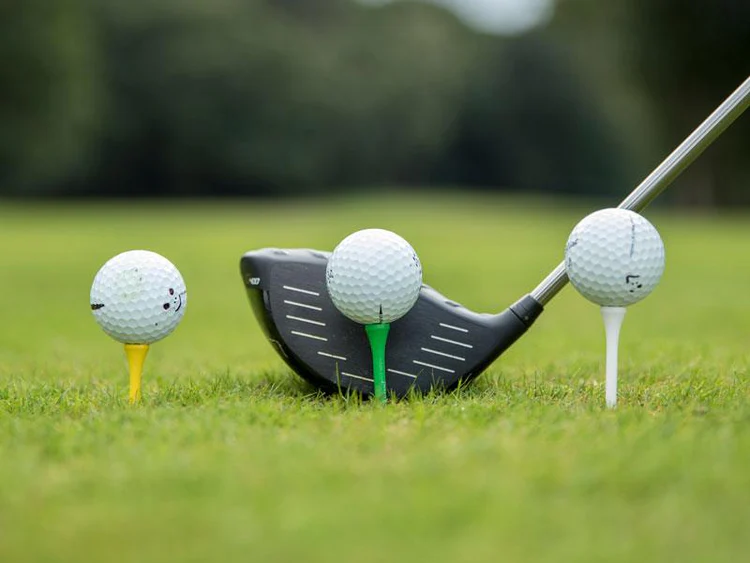
- Assess Your Level of Commitment: Are you a casual golfer who hits the links a few times a year, or are you aiming to play regularly and possibly compete? Beginners or casual players might not benefit as much from high-end clubs as regular or competitive golfers would.
- Balancing Cost vs. Benefit: Higher-priced clubs often come with advanced technologies and materials that promise better performance. However, the improvement they offer over mid-range clubs may not justify the cost for everyone. It’s crucial to weigh the potential benefits against the price to find a balance that works for you.
- Considering Future Upgrades: Golf technology evolves, and so might your interest in the game. Starting with a mid-range set allows you to upgrade specific clubs as your skills improve and your needs change, without the initial outlay for a top-tier set.
- Allocating Budget Across the Set: Prioritize spending on clubs you’ll use most often. Many golfers find that investing in a good driver, a reliable set of irons, and a comfortable putter is more beneficial than splurging on the entire set.
- Investment in Lessons and Practice: Remember, a fancy set of clubs won’t automatically improve your game. Allocating part of your budget to lessons and practice can significantly impact your performance and enjoyment of the game.
Tips for Buying Golf Clubs
Purchasing golf clubs is a significant decision. Here are some tips to ensure you make a wise investment:
- Research and Reviews: Start by researching and reading reviews to understand what’s available within your budget and what might suit your game.
- Test Before Buying: If possible, try out different clubs at demo days, fitting centers, or golf shops with simulators. How a club feels in your hand and during your swing is critical.
- Consider Used Clubs: High-quality, used clubs can offer excellent value, especially for beginners or those on a tight budget. Just ensure they’re in good condition.
- Get Fitted: Custom fitting can significantly improve your game by tailoring clubs to your body and swing. Many retailers offer fitting services, sometimes free with purchase.
- Warranty and Return Policies: Check the warranty and return policies before buying. Knowing you can return clubs that don’t meet your expectations provides peace of mind.
Maintenance and Upkeep Costs
Maintaining your golf clubs is essential for ensuring they perform well and last as long as possible. Here are common maintenance and upkeep costs to consider:
- Grip Replacement: Grips wear out and should be replaced every one to two years, depending on usage. Expect to spend $5 to $15 per grip, plus labor if you’re not doing it yourself.
- Cleaning Supplies: Regular cleaning of your clubs can extend their life and maintain performance. Basic supplies include a groove cleaner, brushes, and towels, which are relatively inexpensive.
- Storage and Travel: Investing in a good golf bag for daily use and a travel case for trips can protect your clubs and save money on repairs or replacements due to damage. High-quality bags and cases range from $100 to $300.
- Regular Check-ups: Just like any other equipment, golf clubs can benefit from regular check-ups. This might include lie and loft adjustments, shaft inspections, and overall condition assessments, which could cost around $50 to $100 annually, depending on the services required.
Also Read: Maximizing the Lifespan of your Budget Golf Set
Investing in golf clubs involves more than just the initial purchase price. Considering how much to spend should also factor in the cost of ownership, including maintenance, upgrades, and potentially lessons to make the most of your equipment. By understanding these costs and planning accordingly, you can enjoy many years of satisfying play on the course.
Also Read: Maintaining your Golf Set
Key Considerations for Beginners
For beginners, selecting the right golf clubs is essential, with complete sets offering optimal value and a comprehensive introduction to the game.
When starting out on the green, it’s crucial to have a set of clubs that caters to your skill level and needs. Beginner golf clubs, particularly complete sets, are specifically designed to assist new players in learning the fundamentals of the game. These sets typically include a driver, irons, a putter, and sometimes even a hybrid or fairway wood, providing a versatile range of clubs to cover various shots on the course. This variety allows beginners to practice with different clubs and understand which ones work best for their playing style.
Optimal Value with Complete Golf Club Sets
Complete golf club sets offer optimal value for golfers, especially beginners, providing a comprehensive selection of clubs to enhance their game.
These complete sets typically include a driver, fairway woods, hybrids, irons, wedges, and a putter, covering all the necessary clubs a golfer needs. For beginners, having a full set eliminates the need to purchase individual clubs separately, saving both time and money. Complete sets are designed to offer forgiveness and consistency, making it easier for new players to learn and improve their game. The variety of clubs in a beginner golf club set allows players to experience different shots and distances, helping them develop a well-rounded skill set.
Exploring Used Golf Clubs
Exploring the option of used golf clubs can be a cost-effective way to access high-quality equipment at lower prices.
When considering purchasing used clubs, one of the key advantages is the significant cost savings that can be enjoyed compared to buying brand new equipment. This becomes particularly beneficial for beginners or casual golfers who are looking to invest in quality gear without breaking the bank. By opting for used clubs, golfers have the opportunity to potentially acquire premium brands and models that they might not have been able to afford when buying new. The range and variety available in the used clubs market also allow players to experiment and find the perfect fit for their playing style and preferences.
Avoiding Low-Quality Beginner Sets
When choosing beginner golf clubs, it is crucial to avoid low-quality sets that may hinder performance and skill development.
Investing in quality beginner golf clubs is fundamental for new players looking to improve their game and overall enjoyment on the course. The materials and construction of the clubs play a significant role in determining their performance and durability. High-quality clubs are typically made from premium materials such as titanium, stainless steel, and graphite, offering better forgiveness, distance, and control. Well-constructed clubs ensure consistency in shots, helping beginners develop proper technique and build confidence in their game.
Determining the Number of Clubs Needed
Determining the ideal number of clubs needed for your golf set depends on factors such as your skill level, playing style, and set sizes available.
In terms of choosing the right number of clubs, a key factor to consider is your skill level. Beginner golfers may benefit from a more straightforward set with fewer clubs, focusing on mastering the basics. Intermediate players often find a mix of clubs that allow for growth and versatility to suit various course conditions. On the other hand, advanced golfers typically prefer a full set of clubs to fine-tune their game and handle all situations effectively.
Impact of Golf Clubs on Performance
The choice of golf clubs significantly impacts a player’s performance and overall enjoyment of the golf game.

It’s crucial for golfers to select clubs that suit their playing style, skill level, and physical attributes.
Performance can vary greatly depending on factors like club material, shaft flex, length, and clubhead design. The right clubs can help players achieve better accuracy, distance, and control on the course. Conversely, using ill-fitting or low-quality clubs can hinder a player’s progress and confidence. Investing in properly fitted clubs can lead to more consistent and enjoyable rounds of golf, ultimately enhancing the overall golf experience.
Also Read: Budget Golf Sets Benefits
Investment for First-Time Golfers
For first-time golfers, understanding the financial investment required for quality equipment is essential to set realistic expectations and maximize enjoyment.
Investing in reliable golf equipment is crucial for beginner players looking to enter the world of golf. While it may seem daunting at first, quality clubs, balls, and accessories can significantly enhance the overall experience on the course. These items are not just tools but also contribute to the comfort, performance, and confidence of the player.
Beginner golfers should consider the long-term benefits of purchasing durable gear, as it can save money in the future by reducing the need for frequent replacements. Higher-quality equipment often comes with better warranties and customer support, providing added peace of mind.
Choosing Between New and Pre-Owned Clubs
Deciding between new and pre-owned golf clubs involves weighing factors like budget, quality, and personal preferences to make the best choice for your game.
When considering whether to purchase new or pre-owned golf clubs, one crucial aspect to evaluate is the cost. While new clubs often come with a higher price tag, they may offer the latest technology and features that could enhance your performance on the course. On the other hand, pre-owned clubs can be a more budget-friendly option, allowing you to potentially access premium brands at a lower cost.
Another critical factor to contemplate is the condition of the clubs. New clubs guarantee pristine quality and durability, ensuring that you are getting equipment in top-notch shape. With pre-owned clubs, it’s essential to inspect their condition carefully to ensure they meet your standards and performance expectations.
Individual preferences play a significant role in the decision-making process. Some golfers prefer the feeling of breaking in new clubs themselves, while others enjoy the history and character that come with using pre-owned clubs. Understanding your own playing style and preferences can guide you towards either purchasing new or pre-owned clubs that align with your needs and enhance your overall golfing experience.
Seasonal Factors Affecting Golf Club Prices
The prices of golf clubs can fluctuate based on seasonal factors, influencing the cost of golf club sets throughout the year.
One key factor that significantly impacts pricing is the golf season. As the weather warms up and avid golfers rush to the courses, demand for new clubs and sets tends to surge, leading to potential increases in prices. Manufacturers and retailers often take advantage of this heightened interest by launching exclusive promotions and sales curated for the golfing season. Manufacturers may introduce newer models or limited editions during this period, further influencing the pricing dynamics in the market.
Optimal Spending Based on Handicap
Golfers with different handicaps have varying needs and budget considerations when it comes to selecting the most appropriate clubs for their skill level.
For high handicappers, who typically struggle with consistency and accuracy, forgiving clubs with larger club heads and more perimeter weighting can help minimize mishits and enhance distance. Investing in game improvement irons and drivers designed to provide more forgiveness and higher launch can greatly benefit their performance on the course.
On the other hand, low handicap golfers who already demonstrate better control and precision may prioritize clubs that offer enhanced workability and feel. Opting for player’s irons and blades that provide greater feedback and shot-shaping capabilities can cater to the specific demands of their game.
For mid handicappers looking to strike a balance between forgiveness and control, exploring clubs with adjustable features like loft, lie, and weights can offer versatility to adapt to varying course conditions and personal preferences.
Advice for Low Handicappers
Low handicappers should prioritize clubs that offer advanced technology and precision to enhance their game and maximize their performance on the course.
These golfers are skilled players seeking equipment that can keep up with their high level of play. Technology plays a crucial role in providing the necessary distance, accuracy, and control on every shot. Clubs with features like adjustable weights, forged faces, and enhanced aerodynamics can make a significant difference in their shot-making ability.
It’s essential for low handicap golfers to seek out clubs that offer customization options, as their game requires fine-tuning to cater to their specific strengths and weaknesses. Investing in clubs with cutting-edge technology can provide these players with the edge they need to compete at the highest levels.
Recommendations for Mid Handicappers
Mid handicappers can benefit from investing in quality golf club sets that strike a balance between forgiveness and control to support their game improvement efforts.
When choosing the right set of clubs, it’s crucial for mid handicappers to consider the clubhead design, shaft material, and overall feel. Opting for clubs with perimeter weighting can enhance forgiveness on off-center hits, providing more consistent results. Selecting graphite shafts for drivers and hybrids can improve swing speed and distance control. A set that includes a variety of irons, from short to long, helps in tackling different course scenarios effectively. Investing in club sets with adjustable features can also aid in customization according to individual preferences and playing style.
Tips for High Handicappers
High handicappers should focus on clubs with a light flexible shaft and higher degree of loft to improve their golf swing mechanics and achieve better results on the course.
Light flexible shafts help high handicappers generate more clubhead speed and allow for a smoother swing, which is crucial for consistent shots. The higher loft angles on clubs provide additional forgiveness and help players get the ball in the air easier, especially on off-center hits. When choosing clubs, it’s essential for high handicappers to prioritize forgiveness, distance, and consistency over other features. Opting for clubs engineered with these specific characteristics can make a significant difference in their game and overall enjoyment of playing golf.
Frequency of Golf Club Replacement
Knowing when to replace your golf clubs depends on factors such as usage frequency, changes in your game, and the onset of a new golf season.
One significant aspect to consider is the wear and tear that accumulates on golf clubs over time, affecting their performance and durability.
The frequency of use plays a crucial role in determining when it’s time to find new clubs, as frequent players may need replacements sooner than occasional golfers.
As your game improves and your swing evolves, your equipment needs may change, leading to the necessity of upgrading certain clubs.
Seasonal adjustments also come into play, with varying weather conditions and course types influencing the type of clubs that best suit your game during different parts of the golf season.
Also Read: Know when the Upgrade your Golf Clubs
Conclusion: Making Informed Decisions
Making informed decisions when purchasing golf clubs involves evaluating factors like quality, technology, and personal preferences to enhance your overall golfing experience.
In terms of quality, it’s crucial to look for clubs that are durable and well-crafted to withstand the wear and tear of regular use on the golf course. Additionally, technology plays a significant role in modern golf clubs, offering features such as adjustable weights, specialized materials for enhanced performance, and advanced club head designs.
Considering personal preferences, factors such as club weight, grip size, and shaft flexibility are essential to ensure comfort and confidence in your swings. By carefully evaluating these aspects, you can make a purchase that not only suits your playing style but also helps improve your overall game. Remember, choosing the right golf clubs tailored to your needs can truly elevate your golfing experience.
Also Read: Ultimate Guide to Budget Golf Clubs
Further Engagement and Queries
For further engagement and queries related to golf clubs, golfers can reach out to customer support or explore additional resources to enhance their equipment knowledge and buying decisions.
Customer support teams are well-equipped with knowledge to assist customers in choosing the best golf clubs tailored to their specific needs. In addition, players can delve into online forums, gear reviews, and expert advice to gain valuable insights before making a purchase. By seeking guidance from these resources, golf enthusiasts can make informed decisions and optimize their playing experience on the course. Whether it’s understanding the different types of clubs or getting advice on improving their game, enthusiasts have a wealth of information at their fingertips.
Frequently Asked Questions
What factors should be considered when determining how much to spend on golf clubs?
When deciding how much to spend on golf clubs, you should consider your budget, skill level, and frequency of play. Other factors such as brand, material, and customization options may also impact the price.
Is it necessary to spend a lot of money on golf clubs?
It is not necessary to spend a large sum of money on golf clubs, especially if you are a beginner or only play occasionally. It is important to find clubs that fit your needs and budget, rather than simply purchasing the most expensive option.
What are some budget-friendly options for golf clubs?
If you are on a tight budget, consider purchasing a pre-owned set of clubs or opting for a beginner or intermediate set. You can also look for sales or discounts on new clubs to save money.
How can I determine the right price for golf clubs?
The right price for golf clubs will vary depending on your budget and needs. It is important to research different options and compare prices to find the best value for your money.
Are custom-fitted clubs worth the extra cost?
Custom-fitted clubs may be worth the extra cost for experienced golfers who are looking to improve their game. However, for beginners or casual players, standard clubs may be just as effective without the added expense.
What is a good rule of thumb for how much to spend on golf clubs?
A good rule of thumb is to spend an amount that you are comfortable with and meets your needs. It is important to not overspend, but also not to sacrifice quality for a lower price.
![Golf Club Buying Guide: How Much to Spend for the Perfect Set [2024]](https://www.fairwayfindings.com/wp-content/uploads/2024/03/Golf-Club-Buying-Guide.webp)


